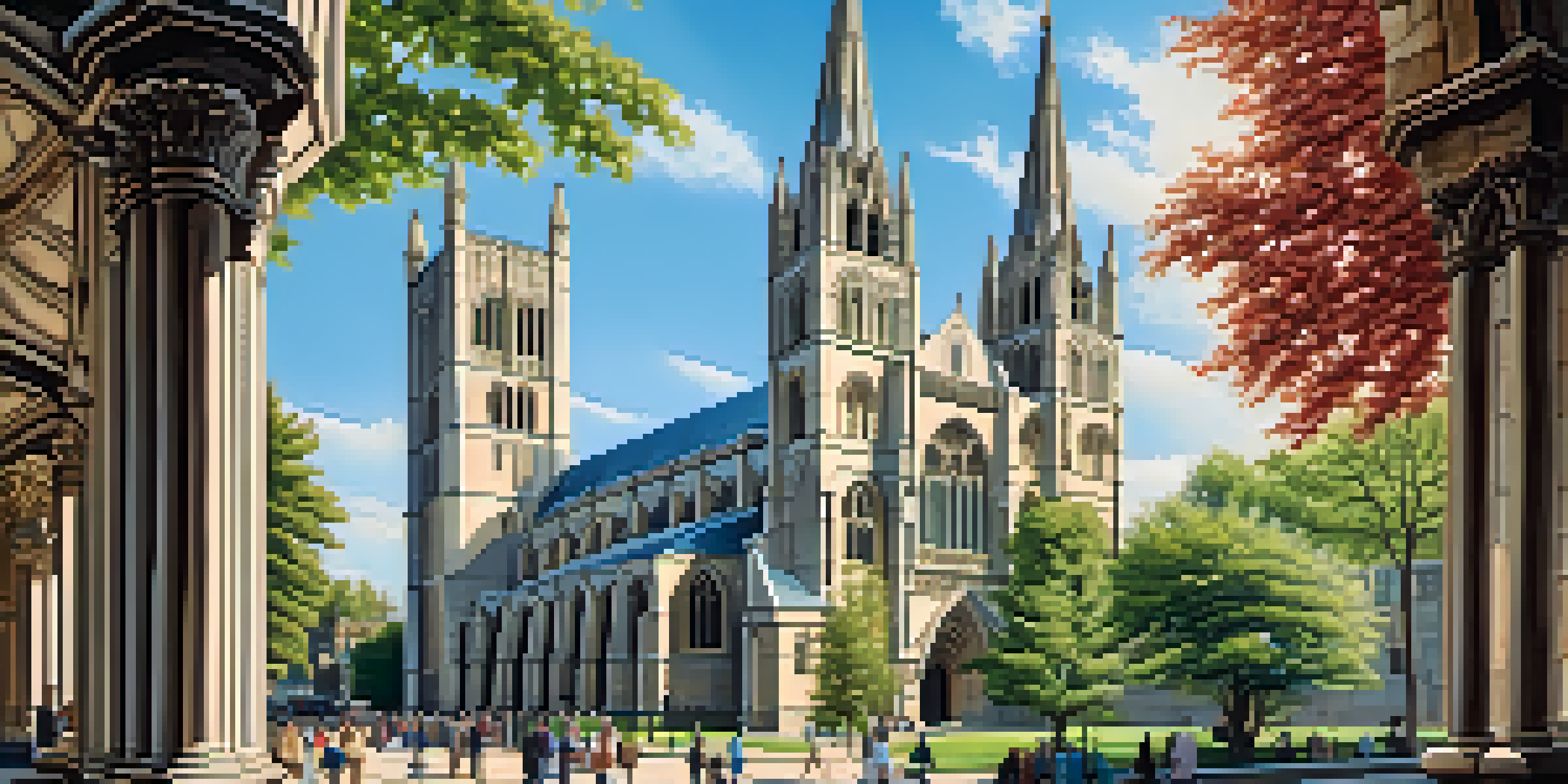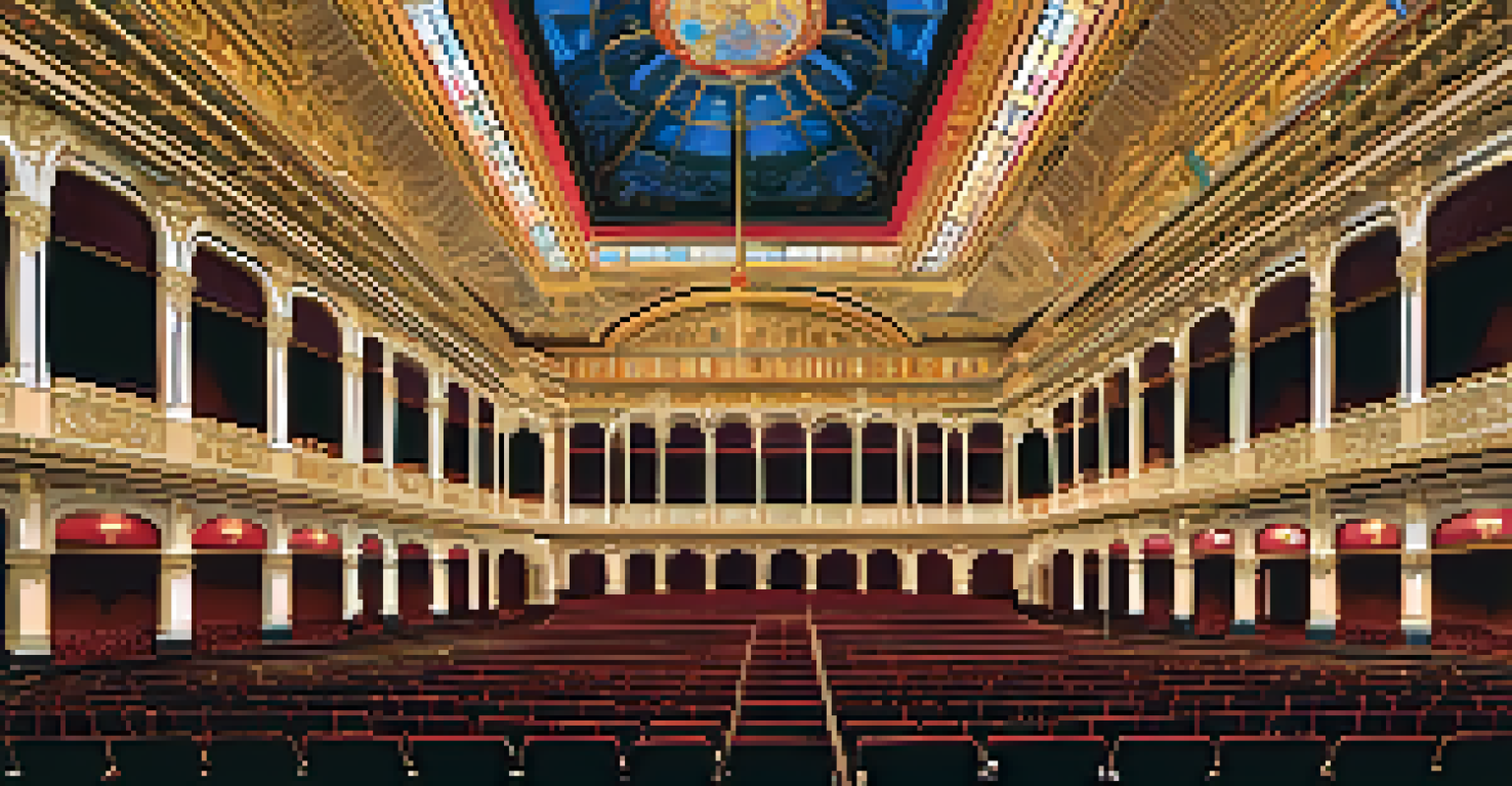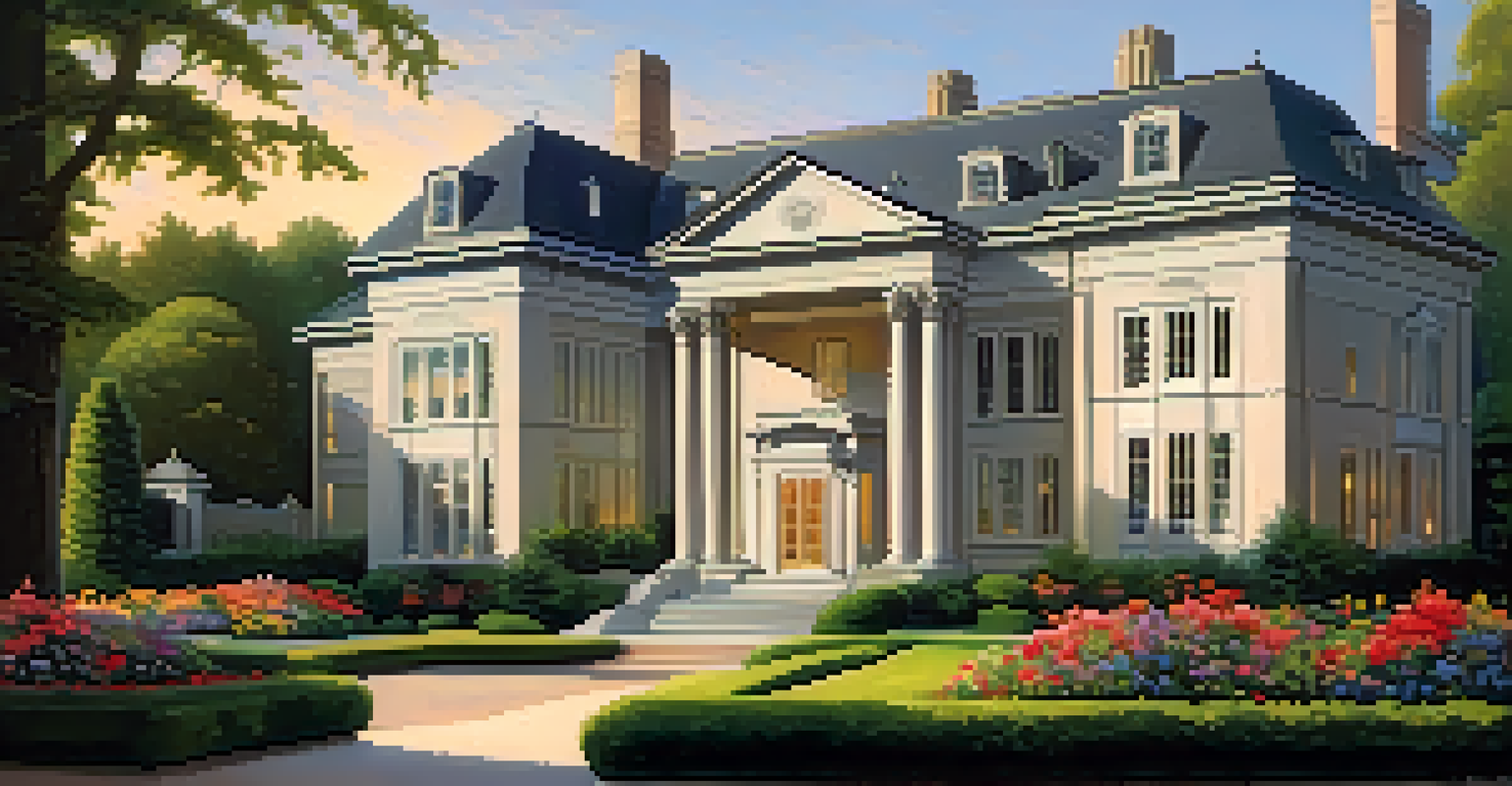The Influence of Gothic Revival in Rochester's Architecture

Understanding the Gothic Revival Movement in Architecture
The Gothic Revival movement emerged in the late 18th century, focusing on medieval architectural styles. Characterized by pointed arches, intricate details, and vertical lines, it aimed to evoke a sense of spirituality and grandeur. This style was a response to the industrial revolution, seeking to reconnect with nature and tradition, which resonates with many artists and architects of the time.
Architecture is the reaching out for the truth.
In Rochester, New York, the Gothic Revival style made its mark during the mid-19th century, reflecting the city's growth and ambition. Builders and architects sought to convey cultural significance through elaborate designs, making Gothic elements a popular choice for churches, public buildings, and private homes. This movement not only showcased craftsmanship but also highlighted the community's values and aspirations.
As we explore Rochester's architectural landscape, it becomes clear that the Gothic Revival was more than just an aesthetic choice; it was a cultural statement. The style allowed cities like Rochester to express their identity and ambitions during a transformative period, blending historic influences with modern needs.
Key Features of Gothic Revival Architecture
One of the most recognizable features of Gothic Revival architecture is the pointed arch, which gives buildings a soaring appearance. This design element not only adds to the visual appeal but also allows for larger windows, which were often filled with stunning stained glass. These windows not only illuminated the interiors but also told stories through intricate designs, inviting reflection and contemplation.

Another hallmark of this style is the use of decorative elements such as gargoyles, spires, and tracery. These features were not merely ornamental; they served practical purposes too, such as water drainage or structural support. However, they also conveyed a sense of whimsy and artistry, making the buildings feel alive and inviting.
Gothic Revival Reflects Cultural Identity
The Gothic Revival movement in Rochester served as a cultural statement, expressing the city's identity and aspirations during a transformative period.
Rochester's architecture showcases these features beautifully, with many buildings reflecting the craftsmanship and attention to detail that characterized the Gothic Revival. The combination of these elements results in a rich tapestry of history and artistry, which continues to inspire admiration from both locals and visitors alike.
Prominent Examples of Gothic Revival in Rochester
One of the most iconic examples of Gothic Revival architecture in Rochester is the Rochester Cathedral, known for its stunning pointed arches and detailed stonework. This magnificent structure stands as a testament to the city's commitment to preserving its historical roots while serving as a vibrant community hub. The cathedral draws visitors not only for its beauty but also for its welcoming atmosphere.
We shape our buildings; thereafter they shape us.
Another significant building is the Eastman Theatre, which showcases the grandeur of Gothic Revival through its impressive façade and intricate interior details. Opened in 1922, it remains a cultural landmark in Rochester, hosting a variety of performances and events that enrich the community's artistic landscape. The theatre’s design reflects a blend of functionality and artistry, embodying the spirit of the Gothic Revival.
Additionally, the historic George Eastman Museum exemplifies how Gothic Revival influences can be incorporated into residential architecture. The museum, once the home of Kodak founder George Eastman, features elegant details and a picturesque setting that invites exploration and reflection. These buildings together create a narrative that captures Rochester's architectural journey through time.
The Role of Local Architects in the Gothic Revival
Local architects played a crucial role in shaping Rochester's Gothic Revival landscape, bringing their unique perspectives and creativity to the movement. They often drew inspiration from European designs while adapting them to fit the local context and community needs. This blend of international influence and local flavor resulted in a distinctive architectural style that defined Rochester’s character.
Architects like Andrew Jackson Warner and his contemporaries were instrumental in designing key Gothic Revival structures. Their attention to detail and commitment to craftsmanship resulted in buildings that not only met functional requirements but also inspired awe. These architects understood the importance of architecture in conveying cultural narratives, and their work continues to be celebrated today.
Local Architects Shaped Rochester
Local architects played a vital role in adapting Gothic Revival designs to the community's needs, creating a distinctive architectural style that defines Rochester.
The collaborative efforts of these local architects contributed to a sense of pride and identity for Rochester residents. As the city evolved, their designs reflected the aspirations and values of the community, making Gothic Revival a lasting symbol of Rochester's architectural heritage.
Cultural Significance of Gothic Revival in Rochester
The Gothic Revival movement in Rochester was not just about architectural style; it represented a broader cultural shift. As the city grew and evolved, the need for architectural expressions that resonated with the community's values became evident. Gothic Revival buildings served as cultural landmarks, reinforcing a sense of identity and continuity amidst the rapid changes of the 19th century.
These structures often hosted important community events, from religious ceremonies to public gatherings. They became gathering spaces where individuals could come together to celebrate their shared heritage and aspirations. This communal aspect of Gothic Revival architecture fostered connections among residents, making the buildings integral to Rochester's social fabric.
Moreover, the enduring beauty of these structures inspires contemporary artists and architects, reminding them of the importance of tradition in modern design. The Gothic Revival's influence can still be felt today, as it encourages a dialogue between past and present, shaping the way Rochesterians view their city and its architectural legacy.
Preservation Efforts for Gothic Revival Buildings
As Rochester continues to grow, the preservation of its Gothic Revival architecture has become a crucial focus for many community organizations. These efforts aim to maintain the historical integrity of these buildings while ensuring they remain functional and relevant in today's urban landscape. Preservation not only protects architectural heritage but also fosters a sense of continuity and pride among residents.
Local initiatives often involve collaboration between city officials, architects, and preservationists to create guidelines that balance development with conservation. These guidelines help safeguard the unique characteristics of Gothic Revival buildings, ensuring that future generations can appreciate their beauty and historical significance. This cooperative approach highlights the community's commitment to honoring its past while embracing the future.
Preservation Ensures Architectural Legacy
Efforts to preserve Gothic Revival buildings in Rochester are crucial for maintaining historical integrity while fostering community pride and continuity.
Additionally, restoration projects often engage the public, encouraging community involvement through educational programs and tours. By raising awareness of the importance of these architectural treasures, residents can develop a deeper appreciation for their city's history and culture. This sense of ownership fosters a vibrant community spirit and promotes a shared commitment to preserving Rochester's architectural legacy.
The Future of Gothic Revival in Rochester
Looking ahead, the future of Gothic Revival architecture in Rochester hinges on a balance between preservation and innovation. As new developments arise, there is an opportunity to integrate Gothic elements into modern designs. This fusion can create a unique architectural landscape that respects the past while addressing contemporary needs, fostering a sense of continuity in the urban environment.
Architects and designers are increasingly exploring ways to reinterpret Gothic Revival styles, making them relevant for today’s society. This includes using sustainable materials and technologies that align with modern values while still honoring traditional aesthetics. By reimagining these historical influences, the city can cultivate a rich tapestry of architecture that tells the story of its evolution.

Ultimately, the enduring legacy of Gothic Revival in Rochester reflects the community's deep-rooted appreciation for its history. As discussions around urban development continue, it’s essential to keep this architectural heritage in mind, ensuring that Rochester remains a city where the past and future coexist harmoniously.